 Background…
Background…
Studying in the renowned Surrey Adult Education service of the 1990s and 2000s gave me a firm grounding in ceramics. Other than that I am largely self-taught, and owe much to the generosity of established ceramic artists – in particular Tim Pearce.
Re-locating to North Yorkshire in 2010, I have continued to develop my practice, specialising in sculptural handbuilding, particularly coiling. My base clay is generally a Potterycrafts recipe, which contains a red clay from Derbyshire and buff fireclays from Shropshire. I also use a highly textured grey clay, Rokk, sourced from Potclays in Stoke-on-Trent, who import it from the environs of Barcelona.
I am a member of Northern Potters Association and an associate member of the Craft Potters Association.
Inspired by…
Joan Eardley (1921-1963) – her wild seascapes of the North-East of Scotland coast.
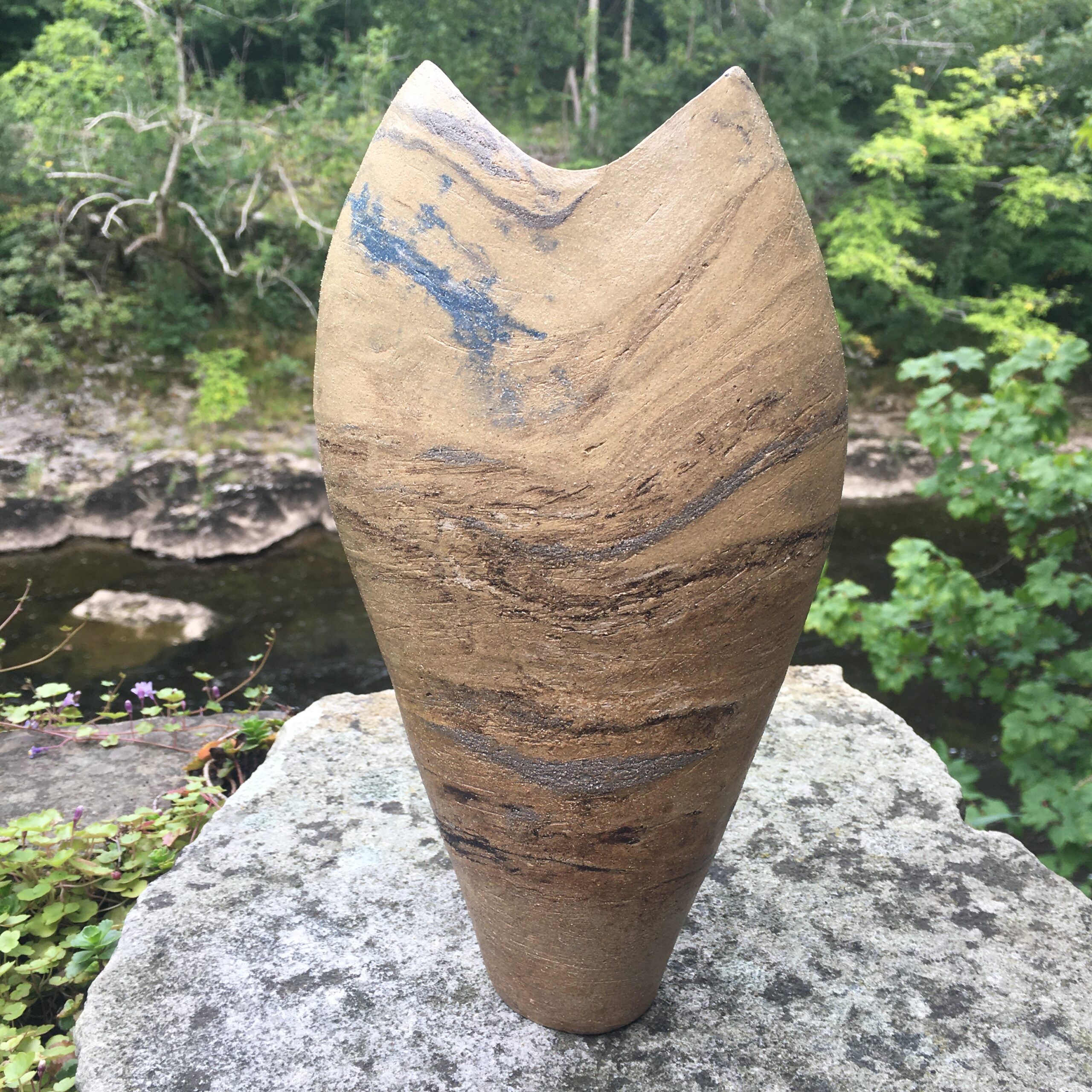
Judith Glover (2021) Seascape1, H: 29 cms
Handbuilt (coiled), stoneware, unglazed, image by Julie Edwardson, private collection
This coiled piece incorporates strata of different clays in the base clay. The interior of the work shows the reverse of the strata, and is as significant to me as the exterior. As well as Eardley’s seascapes this series makes me think of JMW Turner’s seascapes, such as his 1840 painting Seascape with Storm Coming On and his 1828 Seascape.
And also inspired by…
Georgio Morandi (1890-1964) – his quiet still life paintings of tall vessels arranged in groups, as shown on the Home page.
Each of the Morandi-inspired Trio pieces is finished with coloured slip in a narrow pallet of tones: grey, charcoal, cream and spice. These are pared-down forms, possibly reflecting the human torso, although they are not age or gender-specific. The interiors are in a contrasting tone of slip. Potential buyers are encouraged to drop me a note via the Contact page, as I like to encourage them to select their own trio, bearing in mind where the pieces are to be placed in their home, office and so forth.
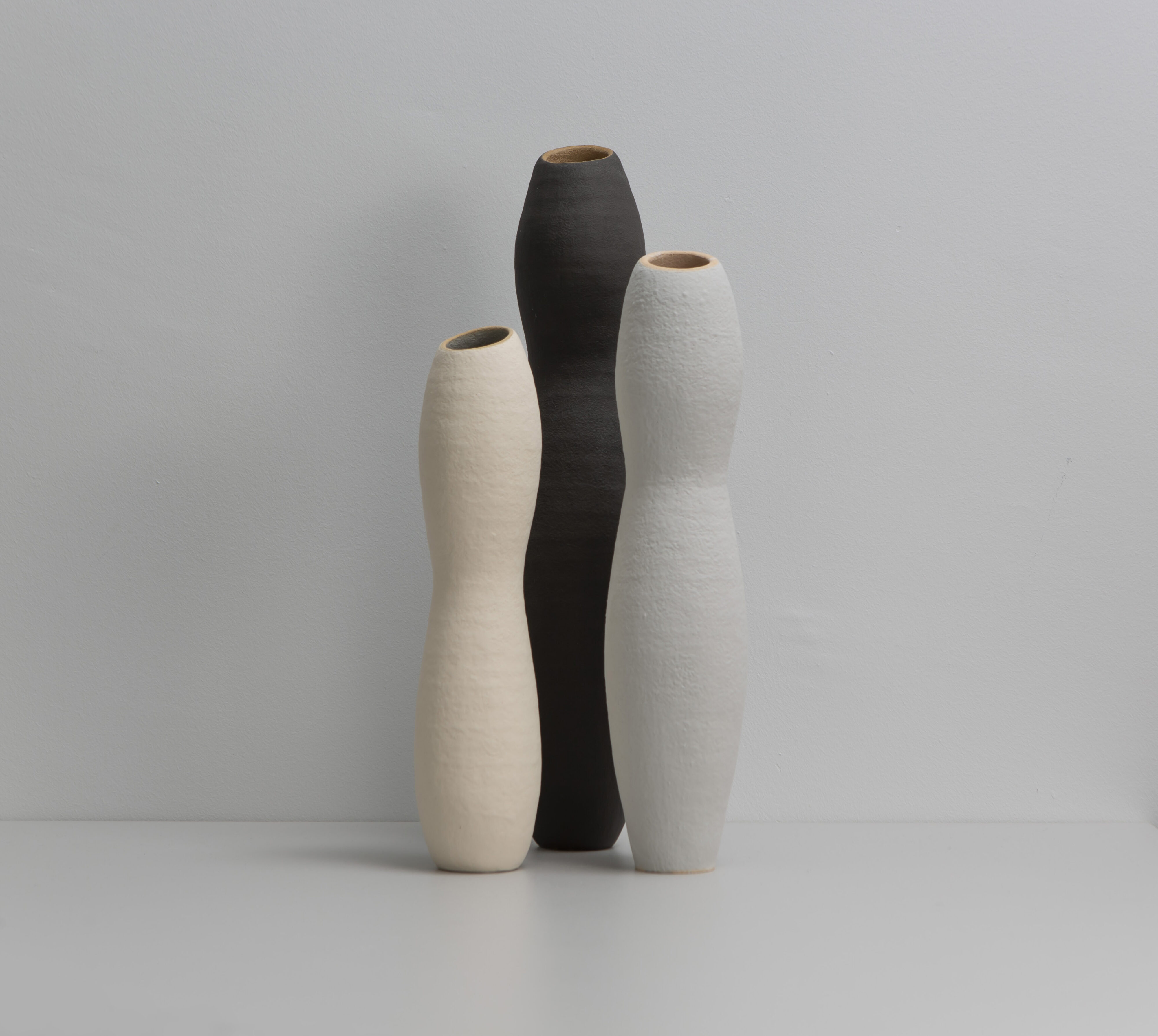
Judith Glover 2019-2022, Morandi-inspired Trio, H 28-36 cms
More recently …
Pieces developed in the pandemic lockdowns reflect land, shore and sea. They are handbuilt (coiled) and use either the Derbyshire/Shropshire mix or a textured grey clay ‘Rokk’. Into this base clay I incorporate strata of clays of different tones and textures, see image below of Beachscape1_2022.
This is technically challenging as the shrinkage rates of the different clays vary, both at the drying and firing stages, meaning that the clays could pull against one another, creating splits and cracks. My solution is to build the work slowly, adding only one or two coils every two days or so, and to dry it very slowly before firing. In Blog no 5 I write about this process; this is an article that appeared in the magazine Claycraft in December 2023.

Judith Glover, 2022, Beachscape1_2022, H 29 cms, private collection
Each of these pieces has a flash of blue, varying from quite small to prominent. Blue for me became a colour of optimism and hope during the global pandemic years. An example is below: detail from Seascape12.
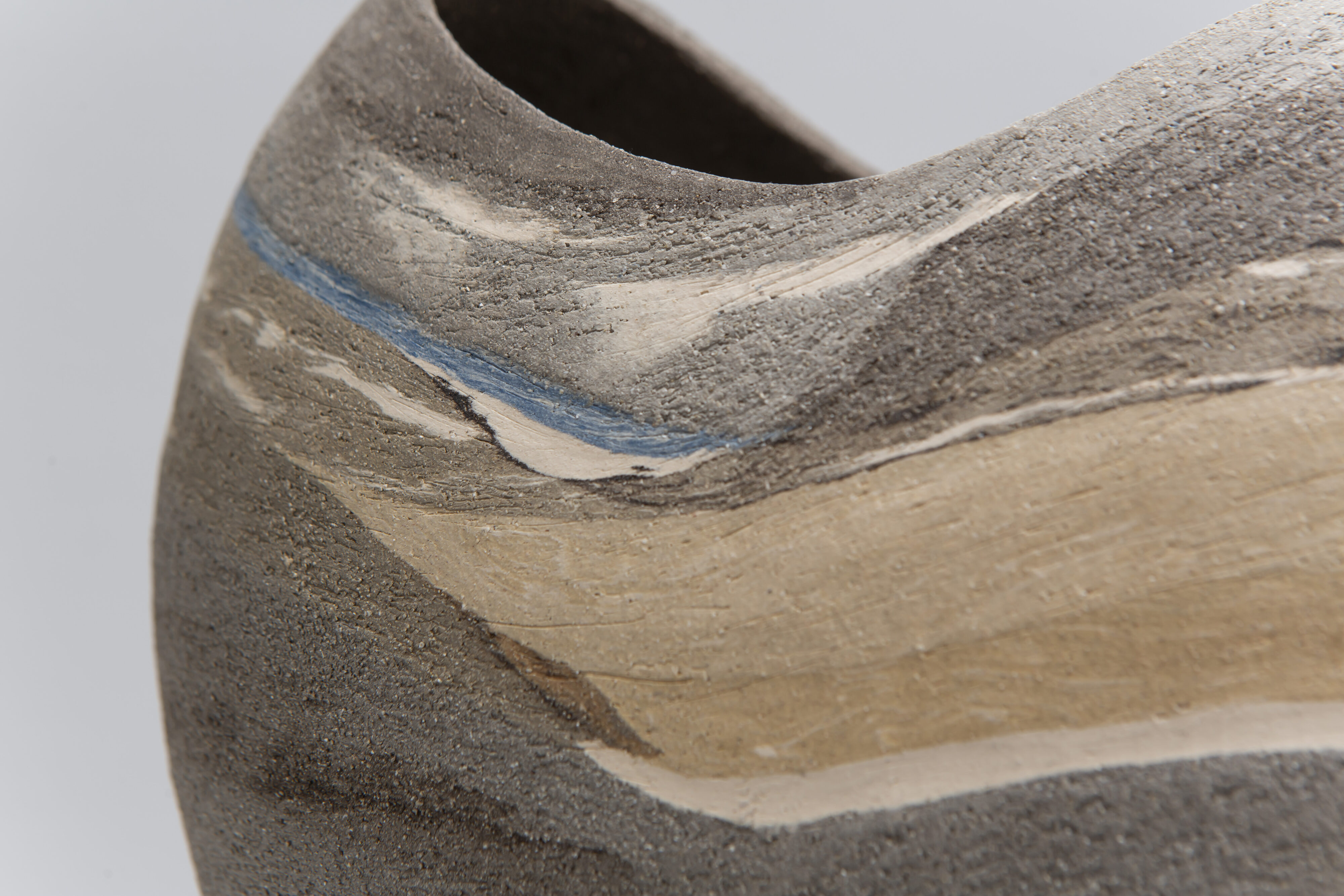
A recent development to my practice of incorporating different clays into a base clay is the building of pieces that combine my two base clays in top and bottom sections. Each has a different shrinkage rate at the firing stage, and so there is considerable jeopardy. Prior to firing, I added several vertical lines that seemed to me to unite the two halves, using a black slip in the indented marks. Some impressionistic marks were made in the top half, again using coloured slips. After my usual very slow drying stage, the piece came out of the kiln intact, see below.
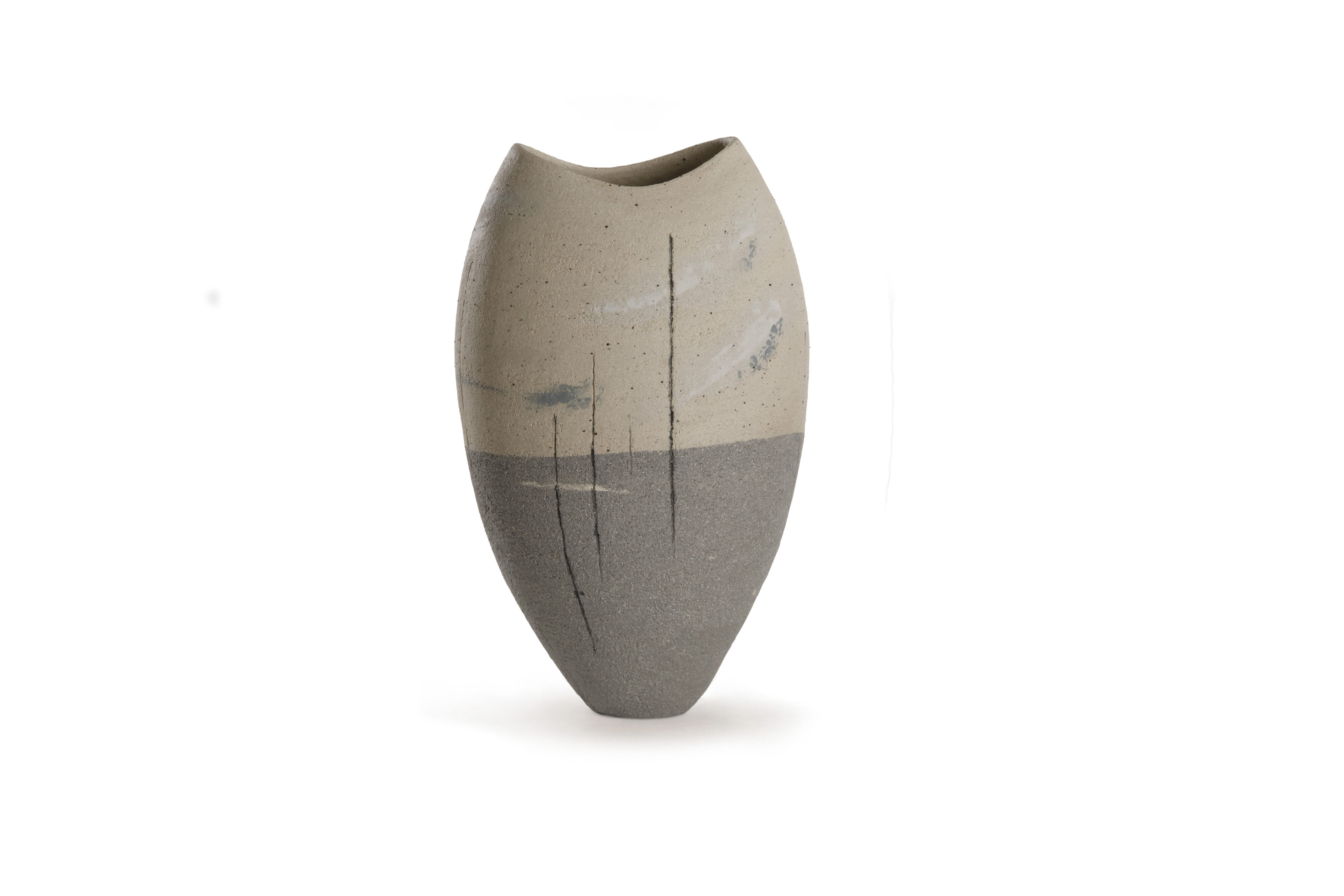 Judith Glover, 2023 Nocturne1_2023, H 27 cms
Judith Glover, 2023 Nocturne1_2023, H 27 cms
Unorthodox …
An approach mid-2022 was rather unusual: inspired by the landscape of North Yorkshire and by the work of Turner and Piper, I used my usual coiling technique and the Derbyshire/Shropshire clay to build tall vessels of around 35 cms in height. Before firing I put an impressionistic series of cloud-like marks on the surface in coloured slip in tones of charcoal, cream and spice. I then fired the piece to stoneware temperature and (this is the unorthodox bit) post-firing marked the surface with watercolours and pastels before sealing the piece with a water-based matt varnish.
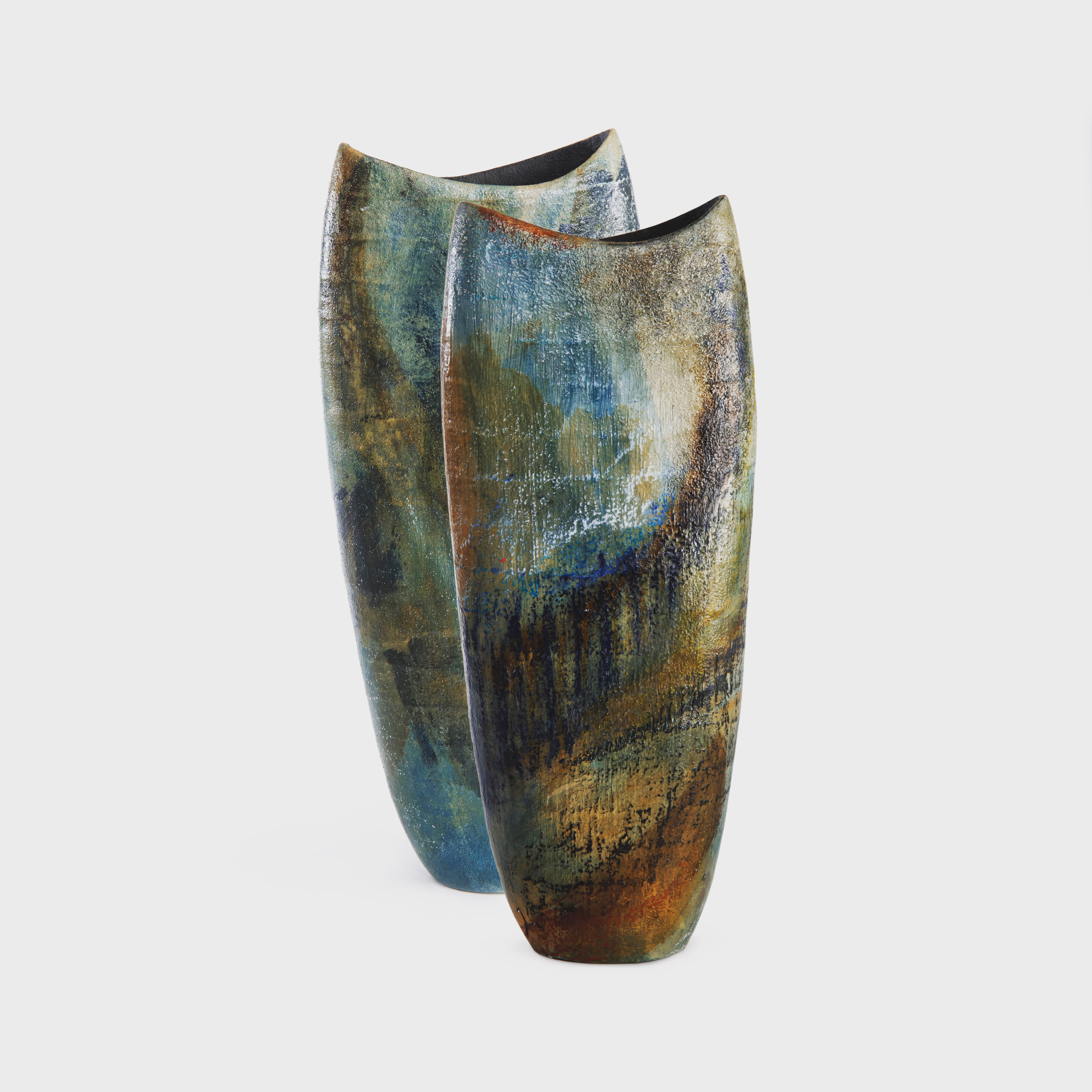
Judith Glover (2023) Duo: Inspired by… Turner and Piper, H 36 cms, private collection
Lines1 is also the result of this technique – the main image, and three smaller images below, show Face A, Face B and a side view of Lines1.



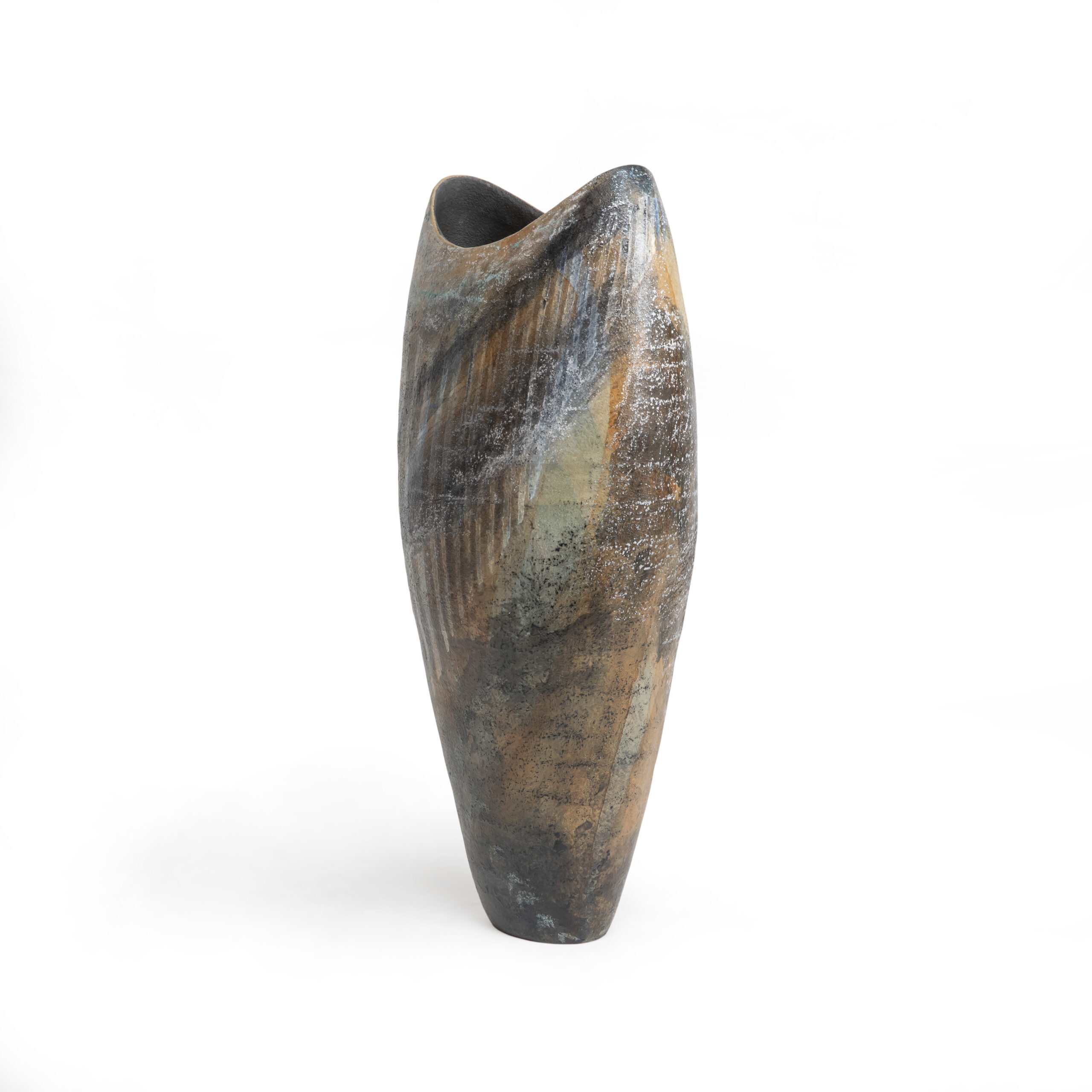
Judith Glover (2022) Lines1, H: 38 cms, private collection